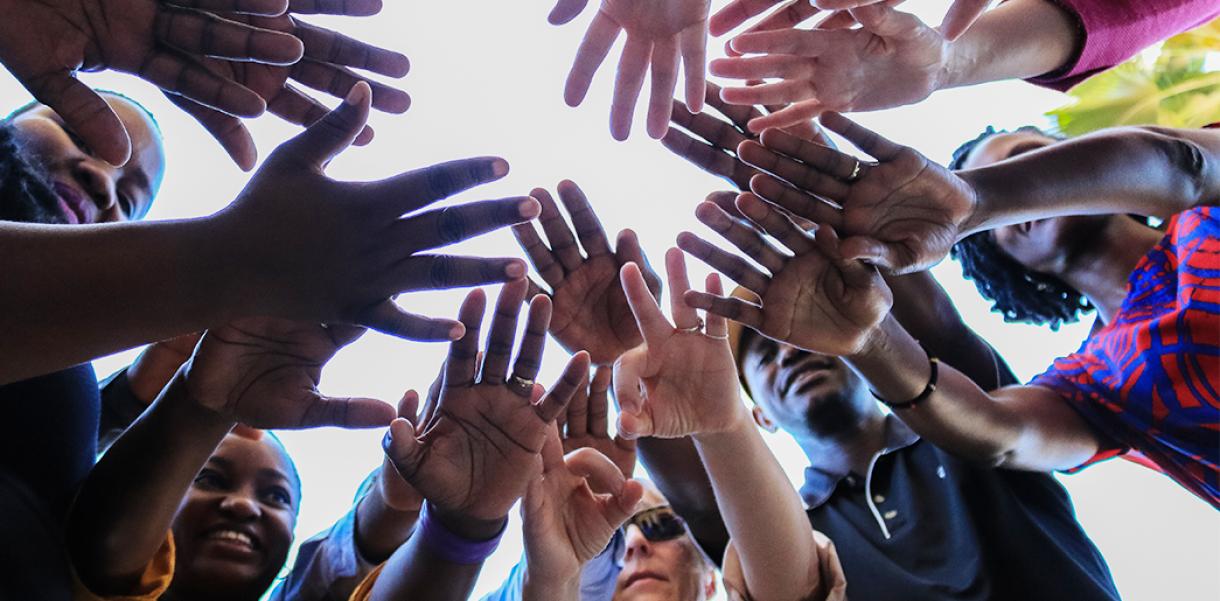What’s the design?
One Concern is a climate resilience technology company, that enables organisations to focus on adaptation and resilience strategies by using newly developed resilience analytics for supporting risk selection, mitigation, pricing and risk management. Applying machine learning and state-of-the-art resilience modelling, One Concern helps organisations better understand and prepare for physical climate risks with the mission of making disasters less disastrous. A 2019 Technology Pioneer, One Concern is part of the World Economic Forum’s Global Innovators community.
The hurdle
“I was awesome at fundraising [sarcastically said, red.] – it took me around eight months to raise €22,000. And then people didn’t give us [more money, red.],” says Ahmad Wani, CEO of One Concern.
One Concern started as a machine learning project at Stanford University after Wani survived a catastrophic flood in his hometown Kashmir in 2014. Soon after, he teamed up with AI engineer Nicole Hu and structural engineer Tim Frank to leverage data science and machine learning to mitigate the problem.
But even when they successfully made an earthquake prediction model in the Bay Area, they found that investors couldn't value its impact. “They don’t happen every day. They don’t even happen every 10 years. The last time it happened in the Bay Area was like 20 or 30 years back,” one investor told Wani.
This “will-may” conversation seems to be on the table every time Wani goes fundraising. Many people understand that there will be risks if we do nothing to prevent natural disasters yet fail to see what’s in it for them. “If you go to a customer, or an investor, you will be like, ‘well, you’ll invest in resilience or you will adapt to the climate [change], but you may or may not get the benefit, because there might not be a disaster next year’,” explains Wani.
Investors and private companies aren’t the only ones who have difficulties realising the value. Wani pointed out that many governments aren't actively involved in climate change because they don’t have the incentives. For example, in the United States, “the local mayor is elected every four years. So they might hire better teachers at schools because that shows results to people quickly,” Wani explains.
On the other hand, it’s hard to show the tangible value of investing in climate change solutions. After four years, those mayors probably won’t even stay in their jobs anymore. And for individuals, such big problems seem so far-fetched that they can’t easily relate their everyday life to them. “They feel it’s not going to affect them. They'd probably rather send kids to private schools than paying for insurance for earthquake flags.”
The strategy
Shifting the language has been very helpful for Wani to communicate the risk with different stakeholders. “From a holistic design standpoint, you don’t want to just show them all the problems. Then they’ll be like 'the world is going to end, or this is so far-fetched, it’s not going to affect me'.”
“So we came up with what we call a planning horizon: instead of telling people about return periods, we started asking them ‘how long are they planning to stay in that location?’ Because if I were telling you that ‘you’re in a 500-year flood zone’, you don't know what that means. But if I were to tell you, ‘well, you plan to be in this house for the next six years – then your probability of having a flood is 30% or 60%’? So a huge part of my time has been spent on communicating risk properly.”
Furthermore, Wani and his team learned that getting investors onboard means being open about your product. “We were very secretive about how we do things. Because we didn’t want Google and Facebook to hire out all our engineers and start a division, we want to take this forward on our own. So it was difficult to build trust because we were not being very transparent about how we arrived at solutions or algorithms. But I realised that before you start to scale, you need to be able to open the lid to show what’s going on. Because that would go a long way in terms of building trust.”
And lastly, Wani believes persistence is the key to making an impact within this space. “You don't see results every day, because you're working on such daunting challenges where the technology is going to take time to build, where the results are gonna take time to see. But we do not give up.”
Tips from the designer
- Communicate plans before problems – instead of talking about the big, far-out consequences, make it relatable to people’s current situation or near future.
- Shift mindsets – applying new perspectives to certain situations might spark the incentive needed to act.
- Open the lid – being open and transparent with the end-users and investors helps you develop trust with them. You need to be transparent about the design itself to its limitations.
- Persistence before results – surround yourself with believers in your project and don’t get defeated by rejection.






